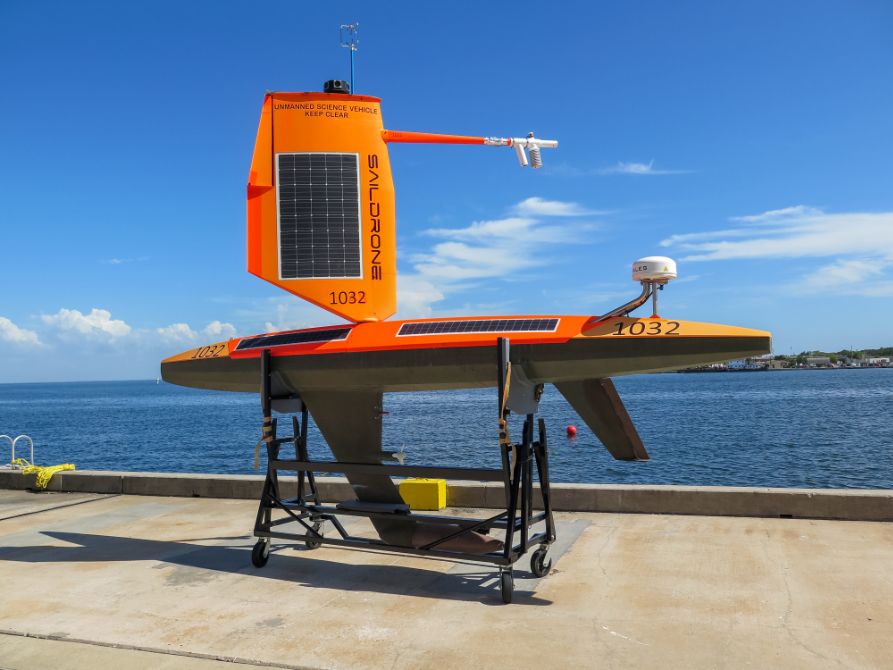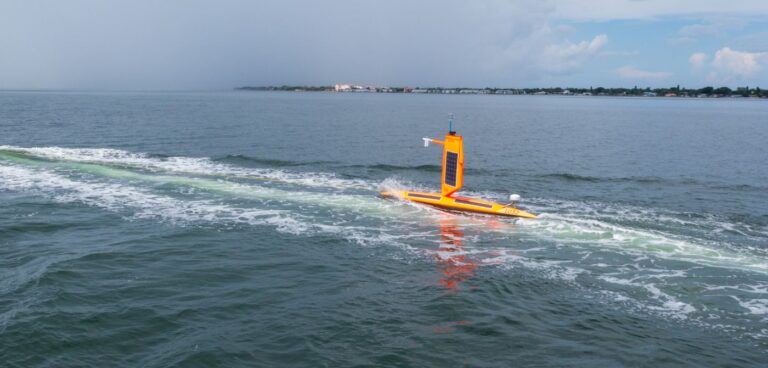Marine drone developer Saildrone has partnered with NOAA’s Office of Oceanic and Atmospheric Research to launch its second hurricane mission, with seven uncrewed surface vehicles (USVs) sent to monitor how hurricanes grow and intensify in the Atlantic Ocean and the Gulf of Mexico.
During last year’s hurricane season in the Atlantic Ocean, one USV sailed through the eyewall of Category 4 Hurricane Sam, sending back live video footage from inside the eye of the storm.
This year, Saildrone will collect critical data from both the Atlantic Ocean and the Gulf of Mexico expanding the potential impact of the mission. This week, one of the USVs bound for an operation area in the eastern Gulf of Mexico, SD 1032, was deployed from Saildrone’s Ocean Mapping Headquarters in St Petersburg, Florida, and another was deployed from Port Aransas, Texas, for the western Gulf.
Richard Jenkins, CEO, Saildrone, said, “We are excited to expand this effort to collect vital data in both the Atlantic and the Gulf of Mexico. We opened our Florida office earlier this year to support exactly this kind of mission, as well as our goal of mapping the entire sea floor around Florida. Combining in situ ocean data with a better understanding of the ocean floor, will help us predict both storm intensity and storm surges, keeping our coastal communities safer from these destructive events.”
NOAA predicts an above-average 2022 hurricane season, with up to 21 named storms and three to six major hurricanes. The Atlantic Hurricane mission aims to improve understanding and predictability of tropical cyclone intensity changes and advance knowledge of the ocean-atmosphere interactions that fuel them. The saildrones will provide in situ data to NOAA’s Pacific Marine Environmental Laboratory (PMEL) and Atlantic Oceanographic and Meteorological Laboratory (AOML).
The seven saildrones are a part of a larger NOAA endeavor to understand hurricane intensification. They will join an array of underwater gliders, surface drifters, profiling floats and aerial assets to collectively gain deeper insight into the development of these storms. AOML scientists on board NOAA’s P-3 and Gulfstream IV Hurricane Hunter aircraft will help gather weather observations from hurricanes, and the P-3 will also launch small uncrewed aerial systems to sample the atmosphere above.
Captain Philip Hall, director of NOAA’s Uncrewed Systems Operations Center, said, “Uncrewed marine and aircraft systems have the potential to transform how NOAA meets its mission to better understand the environment. These exciting emerging technologies provide NOAA with another valuable tool that can collect data in places we can’t get to with other observing systems.”
The saildrones will transmit meteorological and oceanographic in situ data in real time including air temperature and relative humidity, barometric pressure, wind speed and direction, water temperature and salinity, sea surface temperature, and wave height and duration.
NOAA Research will use the data collected by the saildrones to improve hurricane forecast models. The data will also be archived by NOAA’s National Environmental Satellite, Data and Information Service (NESDIS) and sent by NOAA in near real time to the World Meteorological Organization’s (WMO) Global Telecommunication System (GTS) where it is available for the world’s major forecast centers.




